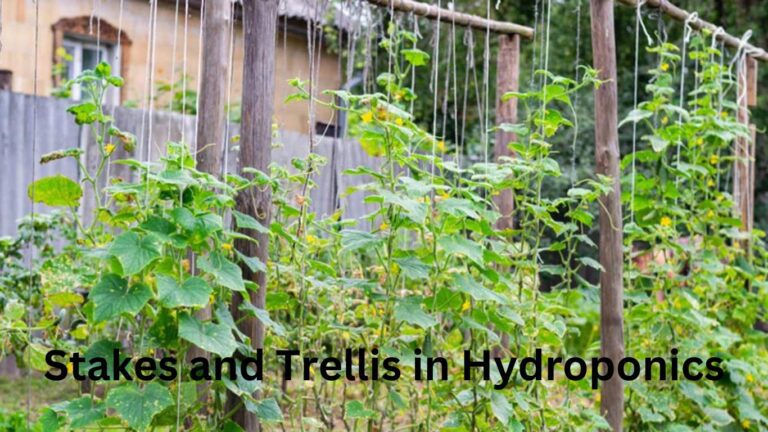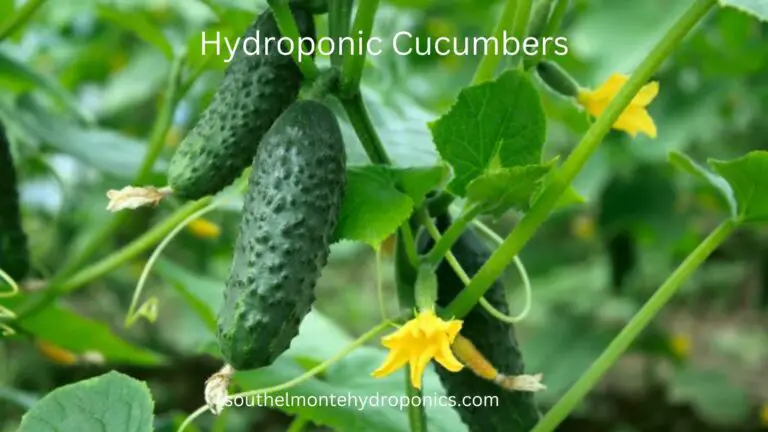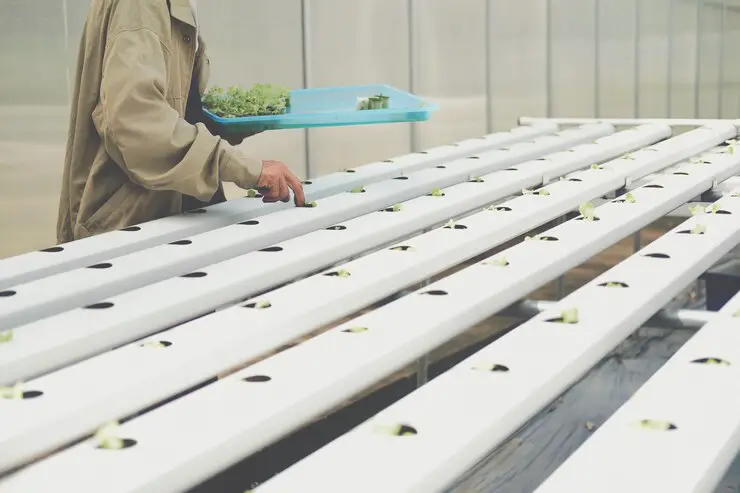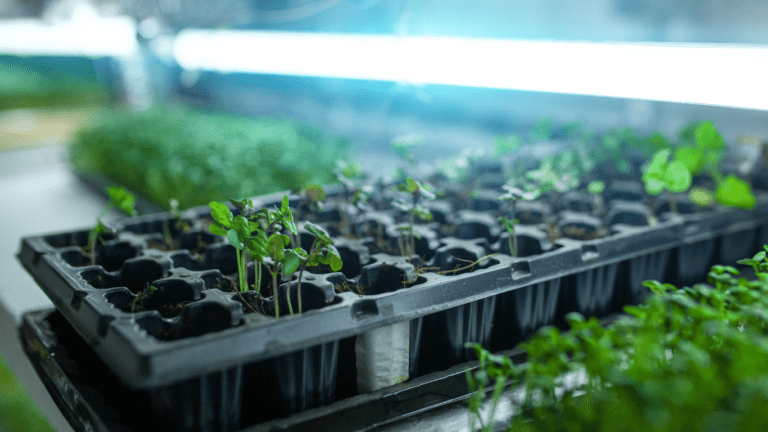Organic Hydroponics: How to Grow Healthy and Natural Plants in Hydroponics
Table of Contents
Understanding the Basics of Organic Hydroponics
Hydroponics is a revolutionary method of growing plants that eliminates the need for soil. Instead, plants are grown in a nutrient-rich water solution, allowing them to thrive in a controlled environment. Organic hydroponics takes this concept a step further by emphasizing the use of natural and sustainable materials in the growing process.
One of the key principles behind organic hydroponics is the use of organic nutrients. These nutrients are derived from natural sources such as kelp, fish emulsion, and compost tea, which provide essential minerals and micronutrients for plant growth. By using organic nutrients, gardeners can ensure that their plants are receiving the highest quality nutrition, free from harmful chemicals or synthetic additives. Additionally, organic nutrients promote healthier soil and improved overall plant vitality.

Choosing the Right Organic Nutrients for Hydroponic Systems
Choosing the right organic nutrients for hydroponic systems is essential for the successful growth and development of your plants. Organic nutrients provide the necessary elements and compounds that plants need to thrive, without the use of synthetic chemicals or pesticides. When selecting organic nutrients for your hydroponic system, there are a few key factors to consider.
Firstly, it’s important to choose nutrients that are specifically formulated for hydroponic use. These nutrients are designed to be highly soluble, ensuring easy absorption by the plants’ roots. Look for products that are labeled as hydroponic or specifically mention suitability for hydroponic systems.
Secondly, consider the nutrient ratios in the organic fertilizers you are using. Different plants have varying nutrient requirements at different stages of growth. Nitrogen, phosphorus, and potassium (NPK) are the primary macronutrients that plants need in larger quantities. Ensure that the organic nutrient formula you select provides the appropriate ratios of these macronutrients, as well as other essential micronutrients like calcium, magnesium, and iron.
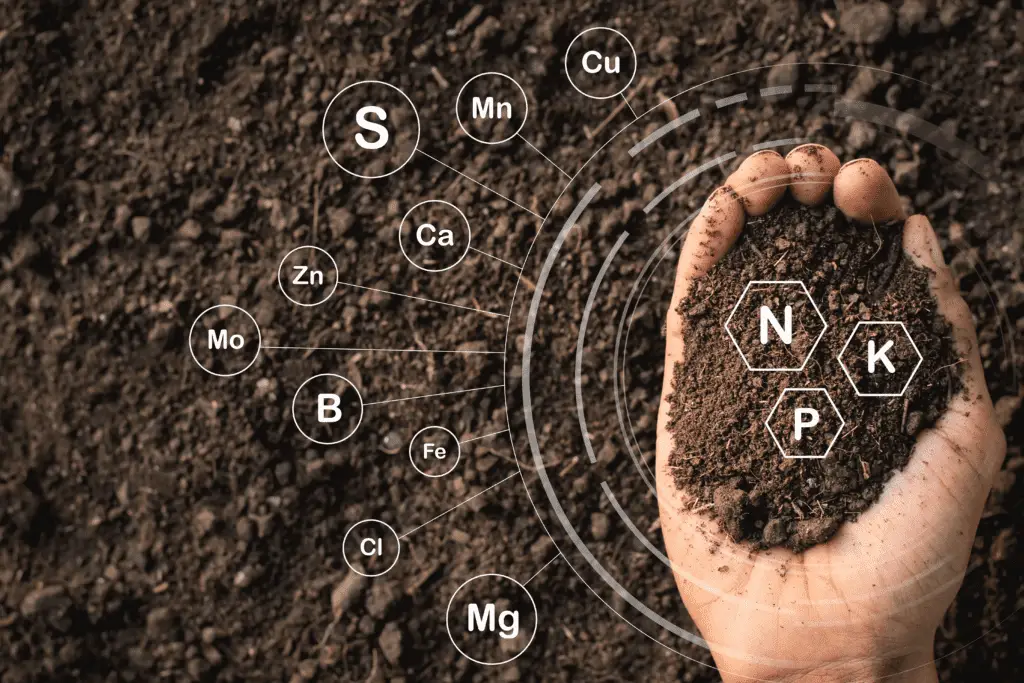
Lastly, consider the organic source of the nutrients. Look for products that are derived from organic matter, such as compost, fish emulsion, or seaweed extract. These organic sources not only provide essential nutrients but also help improve soil fertility and microbial activity in your hydroponic system.
By choosing the right organic nutrients for your hydroponic system, you can ensure that your plants receive the necessary elements for healthy growth while maintaining the principles of organic gardening. With careful consideration of nutrient formulas, ratios, and sources, you can create an optimal environment for your hydroponic plants to thrive and produce bountiful harvests.
Creating an Organic Hydroponic Solution: Essential Components and Ratios
To create a successful organic hydroponic solution, it is important to understand the essential components and ratios that contribute to optimal plant growth. The primary components of an organic hydroponic solution include water, organic nutrients, and pH adjusters. These components work together to provide the necessary nutrients and environment for plants to thrive.
Water serves as the base of the hydroponic solution and acts as a carrier for nutrients. It is crucial to use clean, filtered water to prevent the introduction of contaminants that could harm plants. Additionally, maintaining the correct pH level is essential for nutrient absorption. pH adjusters, such as organic acids or alkaline substances, can be used to ensure the pH of the solution remains within the ideal range for plant uptake.
Organic nutrients are another critical component of the hydroponic solution. These nutrients are derived from natural sources such as compost, worm castings, or organic fertilizers. The nutrient solution should contain a balanced combination of essential elements, including nitrogen, phosphorus, potassium, and trace minerals. It is crucial to carefully measure and adjust the nutrient ratios to meet the specific needs of the plants being grown.

Taking into consideration the unique requirements of each plant species, it is advisable to refer to reputable sources or consult with experts to determine the optimal nutrient ratios for different crops. Several comprehensive nutrient calculators and feeding schedules are available online and in hydroponic literature, assisting growers in determining the appropriate nutrient quantities and ratios for their desired crop yield.
By understanding the importance of water, organic nutrients, and pH adjusters, as well as the ratios in which they should be combined, growers can create an effective organic hydroponic solution. Careful monitoring and adjustment of these essential components will ensure that plants receive the necessary nutrients and maintain proper health throughout their growth cycle. By utilizing best practices in organic hydroponic nutrient management, gardeners can cultivate thriving and productive plants in their hydroponic systems.
Selecting the Best Organic Growing Medium for Hydroponics
When it comes to selecting the best organic growing medium for hydroponics, there are several factors to consider. Each growing medium has its own characteristics and benefits, so it’s important to choose one that suits your specific needs and preferences.
One popular choice for organic hydroponics is coconut coir. It is made from the fibrous husks of coconuts and is known for its excellent water retention and aeration properties. Coconut coir is also pH neutral, which means it won’t alter the acidity or alkalinity of your nutrient solution. This makes it a versatile choice for a wide range of plants.
Another option to consider is perlite. It is a lightweight, volcanic glass that has been expanded by heat. Perlite is excellent at retaining moisture while still providing good drainage. It is also pH neutral, making it a suitable choice for organic hydroponics. Perlite is commonly used as a component in growing mixes, and it is particularly beneficial for plants that require good aeration and root development.
Sphagnum moss is another organic growing medium that can be used in hydroponics. It is highly absorbent and can retain large amounts of water while still providing good drainage. Sphagnum moss also has antimicrobial properties, which can help prevent the growth of harmful bacteria in your hydroponic system.
Ultimately, the best organic growing medium for hydroponics will depend on your specific needs, the type of plants you are growing, and the growing conditions you can provide. Consider factors such as water retention, aeration, and pH neutrality when making your decision. Experimenting with different growing mediums can also help you find the best fit for your hydroponic garden.
Maintaining Proper pH Levels in Organic Hydroponic Systems
Maintaining proper pH levels is crucial for the success of organic hydroponic systems. pH refers to the acidity or alkalinity of a solution, and it directly affects the availability of nutrients to the plants. In organic hydroponics, where synthetic fertilizers are not used, maintaining the correct pH range becomes even more important as it ensures that the organic nutrients are absorbed efficiently by the plants’ root systems.
The ideal pH range for organic hydroponic systems is typically between 5.5 and 6.5. This slightly acidic to neutral range allows for optimal nutrient uptake by the plants. However, different plants may have specific pH preferences, so it is essential to research the pH requirements of the specific crops you are growing. Monitoring the pH levels regularly is essential, and adjustments may be necessary to maintain optimal conditions for plant growth. pH test kits or digital pH meters can be used to measure the pH levels of the nutrient solution accurately.
When the pH levels drift outside of the desired range, adjustments can be made using organic pH up or pH down solutions. These solutions are specifically designed for use in organic systems and help to regulate and stabilize pH levels. It is important to make gradual adjustments to avoid sudden pH fluctuations, as this can stress the plants and affect their growth. Regular monitoring and adjustment of pH levels will ensure that your organic hydroponic plants have the best possible environment for healthy growth and maximum nutrient absorption.
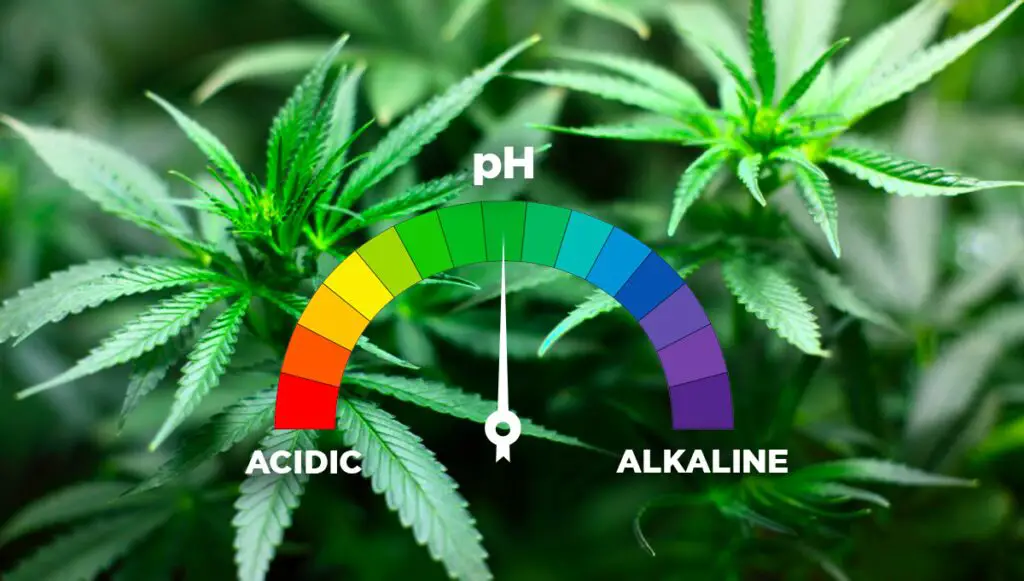
Implementing Effective Lighting Strategies for Organic Hydroponics
Implementing effective lighting strategies is crucial for achieving optimal growth and yield in organic hydroponics. Unlike traditional gardening methods that rely on natural sunlight, hydroponics requires artificial lighting to provide the right spectrum and intensity of light for plant photosynthesis. When selecting lighting options for your organic hydroponic system, it is important to consider the specific needs of your plants and the stage of growth they are in.
One popular and efficient lighting option for organic hydroponics is LED (Light Emitting Diode) lights. LEDs have gained popularity due to their energy efficiency, longevity, and ability to provide specific wavelengths of light that plants need for photosynthesis. Research has shown that by choosing LED lights with the appropriate spectrum, you can optimize plant growth and even influence specific attributes such as flavor, aroma, and nutrient content.
Another lighting strategy to consider is the use of light timers. By setting specific durations for the lights to be on and off, you can mimic natural sunlight patterns and ensure that your plants receive the right amount of light for their growth cycle. This can be particularly beneficial for plants that require specific periods of darkness to trigger flowering or fruiting.
In conclusion, implementing effective lighting strategies is essential for successful organic hydroponics. LED lights and light timers are valuable tools that can help provide the optimal spectrum and intensity of light for your plants’ specific needs. By investing in high-quality lighting equipment and fine-tuning your lighting schedule, you can create an ideal environment for your organic hydroponic garden to flourish.
Managing Temperature and Humidity in Organic Hydroponic Environments
Managing temperature and humidity in organic hydroponic environments is crucial for the success of your crops. Temperature plays a significant role in the growth and development of plants, and maintaining the right temperature range is essential for optimal performance. Most plants thrive in temperatures between 70 and 80 degrees Fahrenheit (21-27 degrees Celsius), but different varieties may have specific temperature preferences. It is important to monitor and control the temperature within your hydroponic system to provide the ideal conditions for your plants.
| Aspect | Importance | Tips |
|---|---|---|
| Temperature | Growth and metabolism | 1. Maintain 18-25°C (64-77°F). |
| 2. Use ventilation and heating/cooling systems. | ||
| Humidity | Nutrient absorption, transpiration | 1. Maintain 50-70% humidity. |
| 2. Use dehumidifiers or humidifiers as needed. | ||
| Lighting | Influences temperature and humidity | 1. Opt for LED lights. |
| 2. Schedule light cycles for climate control. | ||
| Controls | Monitoring and automation | 1. Use sensors for real-time monitoring. |
| 2. Implement automated climate control systems. |
Humidity, on the other hand, refers to the amount of moisture in the air. Managing humidity levels is vital because it affects both plant transpiration and disease development. Each plant has its own humidity requirements, but you generally want to aim for a humidity range between 50% and 70%. To measure and control humidity in your hydroponic environment, you can use a hygrometer and a dehumidifier or humidifier if necessary. Striking the right balance between temperature and humidity will create an optimal growing environment and promote healthy plant growth.
Preventing and Controlling Pests and Diseases in Organic Hydroponics
Pests and diseases can wreak havoc on any hydroponic system, but when it comes to organic hydroponics, prevention and control becomes even more crucial. Unlike conventional methods that rely on synthetic pesticides and fungicides, organic hydroponics requires a more holistic approach. By implementing a few key strategies, you can minimize the risk of pests and diseases while maintaining the integrity of your organic garden.
First and foremost, promoting biodiversity is essential in preventing pest outbreaks. Introducing beneficial insects, such as ladybugs and lacewings, can help control common pests like aphids and spider mites. Additionally, companion planting techniques can be used to deter pests naturally. For example, planting marigolds alongside your hydroponic crops can repel insects and nematodes, reducing the likelihood of infestations.
In terms of disease prevention, strict hygiene practices are paramount. Regularly cleaning and sanitizing your hydroponic system, tools, and equipment can help reduce the spread of pathogens. It is also important to provide adequate air circulation and ventilation to minimize moisture levels, as many plant diseases thrive in damp environments. Furthermore, carefully selecting disease-resistant seed varieties can greatly reduce the risk of infections. Remember, prevention is the best defense when it comes to maintaining the health and productivity of your organic hydroponic garden.
| Aspect | Prevention and Control Methods |
|---|---|
| 1. Crop Rotation | Rotate crops regularly to disrupt pest and disease cycles. |
| 2. Beneficial Insects | Introduce predatory insects like ladybugs for pest control. |
| 3. Neem Oil | Use neem oil as a natural pesticide against certain pests. |
| 4. Companion Planting | Plant companion crops that deter pests or enhance growth. |
| 5. Proper Sanitation | Maintain a clean system to prevent disease spread. |
| 6. Organic Fertilizers | Use organic fertilizers to promote plant health. |
| 7. Quarantine Procedures | Isolate new plants before introducing them to the system. |
| 8. pH and Nutrient Balance | Ensure optimal pH and nutrient levels for plant resilience. |
| 9. Disease-Resistant Varieties | Select hydroponic plant varieties with natural resistance. |
| 10. Regular Monitoring | Monitor plants regularly for signs of pests or diseases. |
Maximizing Nutrient Uptake in Organic Hydroponics: Tips and Techniques
One of the key aspects of successful organic hydroponics is maximizing nutrient uptake by the plants. This is crucial because the nutrient availability and absorption directly affect plant growth, health, and yield. To achieve optimal nutrient uptake, there are several tips and techniques that gardeners can employ.
Firstly, it’s essential to maintain the proper balance of nutrients in the hydroponic solution. This can be achieved by regularly monitoring the pH levels and nutrient concentrations and adjusting them accordingly. The ideal pH range for most plants in hydroponics is between 5.8 and 6.2. By keeping the pH within this range, you ensure that the nutrients remain available and soluble for uptake by the plants’ roots. Additionally, it’s crucial to provide a balanced mix of essential macronutrients (such as nitrogen, phosphorus, and potassium) and micronutrients (such as iron, manganese, and zinc) to meet the specific needs of your plants. Implementing a nutrient schedule or using organic nutrient blends specifically designed for hydroponics can help achieve this balance effectively.
Understanding the Role of Oxygen in Organic Hydroponic Systems
Oxygen is a crucial element for the success of organic hydroponic systems. It plays a vital role in the overall health and growth of plants, ensuring that they receive the necessary nutrients for optimal development. In hydroponic systems, where plants are grown in water-based solutions rather than traditional soil, oxygen becomes even more essential.
One of the key functions of oxygen in organic hydroponics is facilitating the absorption of nutrients by plant roots. Oxygen helps create an aerobic environment in the root zone, allowing for the efficient uptake of essential minerals. It enables the roots to maintain their metabolic activity and prevents the development of anaerobic conditions that can impede nutrient absorption. Oxygen also supports the growth of beneficial microorganisms in the root zone, contributing to the overall health of the plants and the system as a whole.
To ensure an adequate oxygen supply in your organic hydroponic system, several factors must be considered. Firstly, choosing the right growing medium is crucial. Porous media such as perlite or coconut coir provide better aeration and allow oxygen to reach the roots more easily. Additionally, proper water movement and circulation are essential. The use of air pumps, air stones, or diffusers can help oxygenate the water, preventing stagnant conditions and ensuring a steady supply of oxygen to the plants. Monitoring and adjusting oxygen levels regularly is also important to maintain a healthy hydroponic environment. By paying close attention to oxygenation in your organic hydroponic system, you can support the growth and vitality of your plants, ensuring they receive the necessary nutrients for robust development.
Optimizing Water Quality for Healthy Organic Hydroponic Plants
Water quality is a crucial factor in maintaining healthy organic hydroponic plants. In a hydroponic system, water acts as the primary medium for delivering nutrients to the plants. Therefore, it is essential to ensure that the water used is of the highest quality to optimize plant growth and productivity.
One key consideration for water quality in organic hydroponics is the absence of harmful chemicals and contaminants. Organic hydroponic systems rely on natural and sustainable practices, so it is important to avoid the use of chlorine, chloramines, and other chemical disinfectants in water. These substances can be detrimental to the beneficial microorganisms present in the system and can negatively impact plant health. Instead, using filtered or purified water can help eliminate these harmful substances and provide a clean and healthy environment for the plants.
Another aspect of water quality to consider is the pH level. pH is a measure of the acidity or alkalinity of water, and it plays a crucial role in nutrient availability to the plants. Organic hydroponic systems typically require a slightly acidic pH range of 5.5 to 6.5 to ensure optimal nutrient uptake. Regular monitoring of the water’s pH level and adjustments using natural pH adjusters, such as citric acid or vinegar, can help maintain the ideal pH range for healthy plant growth. By taking these measures to optimize water quality, organic hydroponic gardeners can provide their plants with the best conditions for thriving and producing high-quality, nutritious crops.
| Parameter | Ideal Range | Importance |
|---|---|---|
| pH Level | 5.5 – 6.5 | Critical for nutrient uptake |
| Electrical Conductivity (EC) | 1.2 – 2.5 mS/cm | Indicates nutrient concentration |
| Total Dissolved Solids (TDS) | Below 1500 ppm | Monitors overall nutrient content |
| Temperature | 18 – 22°C (64 – 72°F) | Affects nutrient absorption and microbial activity |
| Dissolved Oxygen (DO) | 6 – 8 ppm | Essential for root health and nutrient absorption |
| Nutrient Solution Changes | Weekly or as needed | Prevents nutrient imbalances |
| Water Source | Pure, filtered, or rainwater | Avoids contaminants and impurities |
| Beneficial Microorganisms | Present in the system | Supports plant health and prevents diseases |
| Water Aeration | Continuous aeration | Enhances oxygen availability to roots |
Monitoring and Adjusting Nutrient Levels in Organic Hydroponics
To ensure optimal growth and plant health in your organic hydroponic system, it is crucial to monitor and adjust nutrient levels regularly. Nutrients play a vital role in providing the essential elements needed for plants to thrive, and maintaining the right balance is key to achieving successful results.
Monitoring nutrient levels can be done through regular testing of the nutrient solution. This can be done using various methods, such as using electronic meters or test kits specifically designed for hydroponic systems. These tests allow you to measure the concentrations of individual nutrients, such as nitrogen, phosphorus, potassium, calcium, magnesium, and others, ensuring that they are within the desired range.
Once you have identified any imbalances or deficiencies in the nutrient levels, adjustments can be made accordingly. This can involve adding or reducing specific nutrients to bring them back into the optimal range. Keep in mind that different plants have unique nutrient requirements, so it is essential to tailor the adjustments based on the specific needs of your crops.
Regular monitoring and adjustment of nutrient levels will not only help maximize plant growth and yield but also prevent nutrient deficiencies or toxicities that can negatively impact the health of your plants. By staying proactive in managing nutrient levels, you can ensure a thriving and productive organic hydroponic garden.
Harvesting and Enjoying the Fruits of Your Organic Hydroponic Garden
Harvesting the fruits of your organic hydroponic garden is an exciting and rewarding experience. After weeks of carefully nurturing your plants, it’s time to reap the benefits of your hard work. But before you start plucking those juicy tomatoes or crisp lettuce leaves, there are a few things to keep in mind to ensure optimal flavor and nutrition.
First and foremost, timing is crucial when it comes to harvesting your hydroponic produce. Each plant has its own unique growth cycle, so it’s essential to familiarize yourself with the specific requirements of the crops you’re growing. Keep track of the average days to maturity and monitor the plants closely to observe any signs of ripeness. Harvesting too early may result in underdeveloped flavors, while waiting too long can lead to over-ripeness and diminished nutritional value.
When it’s time to harvest, handle the plants with care to avoid damaging them. Use sharp, sterile scissors or pruning shears to make clean cuts, ensuring that you’re not leaving behind any jagged edges that could invite disease or pests. Gently remove the harvested produce from the plant, being mindful of any delicate stems or roots. Remember that proper handling and sanitation practices are crucial for preserving the quality and shelf life of your organic hydroponic crops.
What are the benefits of organic hydroponics compared to traditional gardening methods?
Organic hydroponics allows for precise control over nutrient levels, reduces water usage, eliminates the need for soil, and minimizes the risk of pests and diseases.
Can I use any type of nutrients in my organic hydroponic system?
No, it is important to choose organic nutrients specifically formulated for hydroponic systems to ensure optimal plant growth and health.
How do I maintain the proper pH levels in my organic hydroponic system?
Regularly test the pH of your nutrient solution and make adjustments using organic pH modifiers to keep it within the appropriate range for your plants.
What is the best organic growing medium for hydroponics?
Organic options for hydroponic growing mediums include coco coir, peat moss, and perlite. Choose one that suits your plants’ needs and provides good drainage.
How can I prevent pests and diseases in my organic hydroponic garden?
Implement preventive measures such as regularly inspecting plants, practicing good hygiene, using beneficial insects, and applying organic pest control methods when necessary.
What role does oxygen play in organic hydroponic systems?
Oxygen is vital for healthy plant growth in hydroponic systems. It helps roots absorb nutrients, prevents root rot, and promotes overall plant health.
How can I optimize water quality for my organic hydroponic plants?
Use filtered or purified water to reduce the risk of contaminants. Additionally, regularly monitor water quality and make necessary adjustments to maintain ideal nutrient levels.
How do I monitor and adjust nutrient levels in my organic hydroponic system?
Regularly test the nutrient levels in your solution using a reliable testing kit. Adjust the levels by adding organic nutrients as needed to ensure a balanced and adequate supply for your plants.
When is the right time to harvest the fruits from my organic hydroponic garden?
Harvesting times vary depending on the specific plant and its maturity. Generally, fruits should be harvested when they are fully ripened and easily detach from the plant.
Can I consume the fruits immediately after harvesting from my organic hydroponic garden?
Yes, the fruits harvested from your organic hydroponic garden can be consumed immediately. However, it is recommended to wash them thoroughly before consumption to remove any potential residue.

Pallavi Gupta is a burgeoning writer at SouthElMonteHydroponics, blending her passion for data analysis with a keen interest in biotechnology. Currently pursuing a Bachelor’s in Biotechnology at Amity University, Pallavi delves into the intricacies of life sciences while gaining hands-on experience in the exciting world of data analysis. Her unique background provides a fresh perspective on hydroponic farming, as she explores the intersection of biotechnology and sustainable agriculture. Through her writing, Pallavi aims to bridge the gap between data-driven insights and innovative farming practices, inspiring others to harness technology for a greener future.

